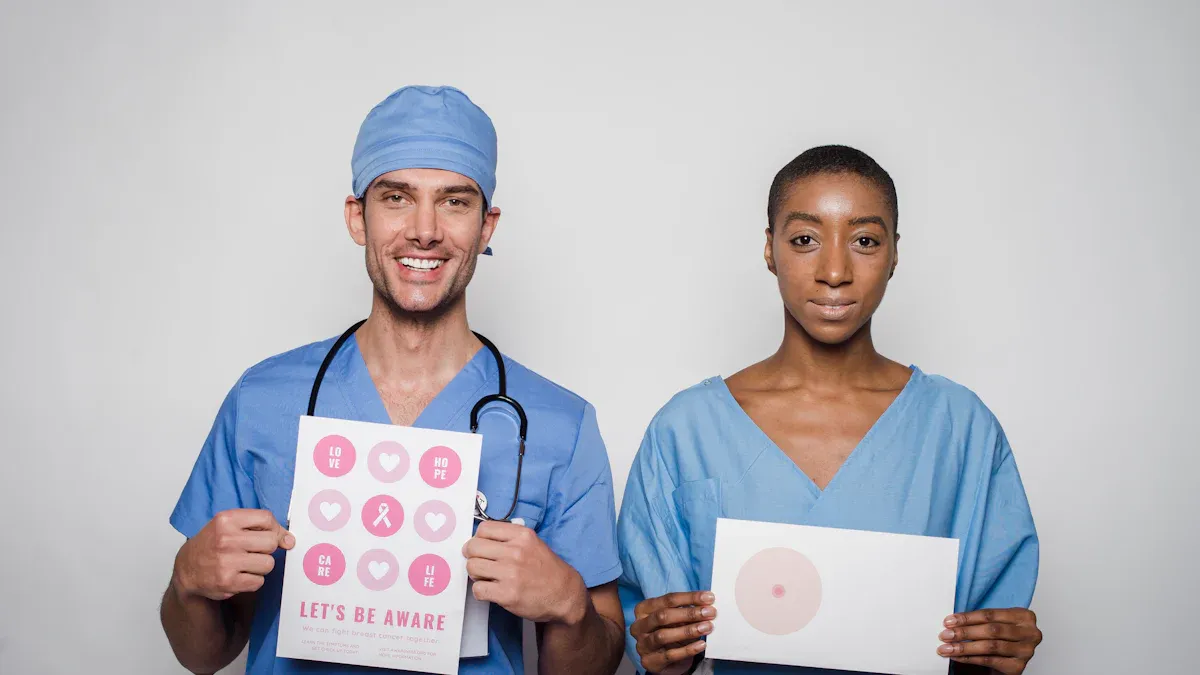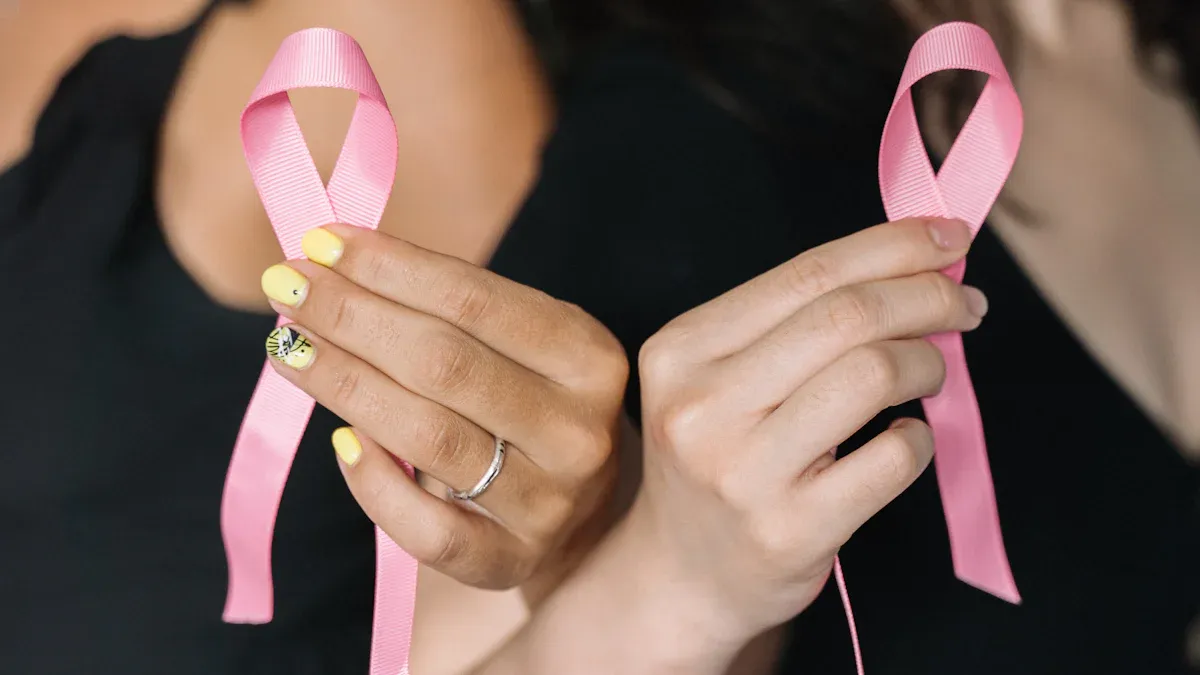Building a Community Network for Cancer Prevention That Works

Cancer prevention starts with you and your community. By working together, you can create a network that fosters education, support, and access to life-saving resources. These networks have already shown remarkable success:
Colorectal cancer screenings have risen among Chinese Americans and Hispanics.
Prostate cancer screenings have improved for African Americans.
When communities unite, they raise awareness, promote healthy habits, and encourage early detection. You hold the power to make a difference by building a community network for cancer prevention that truly works.
Key Takeaways
Community groups help people learn and care for their health.
Working with local leaders and doctors makes cancer prevention better.
Hosting events like health fairs and classes gets people involved.
Support groups help people feel less alone and give them strength.
Using social media and online tools shares information and connects people.
Building a Community Network for Cancer Prevention

What Are Community Networks?
Community networks are groups of individuals, organizations, and institutions working together to achieve a common goal. In cancer prevention, these networks unite people to share knowledge, resources, and support. They often focus on specific populations, such as underserved communities or minority groups, to address unique challenges and disparities in healthcare access.
For example, community networks have been established to support African Americans, Asian Americans, and Hispanics in cancer prevention efforts. These networks often include churches, local leaders, and healthcare providers, creating a strong foundation for collaboration. The table below highlights the diversity of community networks and their reach:
Community Target | Number of CNPs |
|---|---|
African Americans | |
American Indians and Alaska Natives | 3 |
Asian Americans | 2 |
Hispanics | 4 |
Pacific Islanders | 3 |
Medically underserved individuals | 6 |
National reach | 4 |
Regional reach | 13 |
Local reach | 8 |
These networks are not just about numbers. They represent a collective effort to make cancer prevention accessible and effective for everyone.
The Role of Community Networks in Health Promotion
Community networks play a vital role in promoting health and preventing cancer. They empower you to take charge of your health by providing education, resources, and support. Through these networks, you can learn about cancer risks, prevention strategies, and the importance of early detection.
The impact of community networks is evident in the success stories of various populations. For instance, Vietnamese, Hmong, and Hispanic women have seen significant improvements in cancer screening rates. African Americans have benefited from increased prostate cancer screenings, while Asian immigrants have reduced tobacco use. These achievements demonstrate the power of collective action in improving health outcomes.

Building a Community Network for Cancer Prevention involves several stages, including funding local initiatives, offering training, and developing online tools. The table below outlines these strategies:
Stage/Strategy | Description |
|---|---|
Mini-grant programs | Provides funding to support local initiatives for cancer prevention. |
Training | Offers educational resources to enhance skills and knowledge in cancer prevention. |
Online tools | Develops digital resources to assist communities in implementing evidence-based interventions. |
Evidence academies | Facilitates workshops to educate community members on the use of evidence in cancer control. |
Evaluation support | Assists partners in assessing the effectiveness of their capacity-building initiatives. |
By participating in these networks, you can contribute to a healthier community and inspire others to do the same.
Key Benefits of Community Networks in Cancer Prevention
Raising Awareness and Education
Sharing Information About Cancer Risks
Community networks excel at spreading vital information about cancer risks. By collaborating with local leaders and organizations, these networks create tailored educational programs that resonate with specific populations. For example, community-driven initiatives have significantly improved cancer knowledge and screening rates among underserved groups. These efforts empower you to understand the risks and take proactive steps toward prevention.
Educating on Prevention and Early Detection
Education is a cornerstone of cancer prevention. Community networks design workshops and seminars to teach you about early warning signs and prevention strategies. These programs often include practical advice, such as how to perform self-exams or recognize symptoms. By participating, you gain the tools to protect your health and encourage others to do the same.
Promoting Healthy Lifestyles
Encouraging Balanced Diets and Exercise
Healthy habits can reduce cancer risks, and community networks make adopting these habits easier. They organize fitness challenges, cooking classes, and wellness fairs to inspire you to embrace a balanced diet and regular exercise. Research shows that local organizations and collaborative actions can drive meaningful health improvements.
Evidence Description | Key Findings |
|---|---|
Community organizations' role | Local organizations can enact change and influence community health initiatives. |
Collaborative action | Partner organizations create opportunities for community health improvements. |
Influence of networks | Other networks and systems can be leveraged to enhance health outcomes. |
Reducing Tobacco and Alcohol Use
Tobacco and alcohol are major cancer risk factors. Community networks tackle these issues through awareness campaigns and support groups. They provide resources to help you quit smoking or reduce alcohol consumption. These efforts create a supportive environment where you feel encouraged to make healthier choices.
Facilitating Early Detection and Screening
Organizing Community Screening Events
Early detection saves lives. Community networks organize screening events to make these services accessible to everyone. For instance, the Colorado CPCRN launched a mini-grant program to enhance cancer prevention and early detection. This initiative funded projects that integrated family history into healthcare practices, addressing local needs effectively.
Promoting Regular Check-Ups
Regular check-ups are essential for catching cancer early. Community networks emphasize the importance of routine screenings and help you schedule appointments. They also collaborate with healthcare providers to ensure you have access to the necessary resources. These efforts make it easier for you to prioritize your health.
Providing Emotional and Social Support
Building Support Groups for Patients and Families
Cancer can feel overwhelming, but you don’t have to face it alone. Community networks create support groups that bring patients and families together. These groups offer a safe space where you can share experiences, ask questions, and find comfort in knowing others understand your journey.
Support groups often meet in person or online, making them accessible to everyone. They provide emotional strength and practical advice. For example, you might learn how to manage treatment side effects or navigate healthcare systems. These groups also connect you with resources like counseling services or financial assistance programs.
Tip: Joining a support group can reduce stress and improve your mental health. It’s a reminder that you’re not alone in this fight.
Support groups don’t just help patients. They also empower families and caregivers. By participating, they gain insights into how to provide better care and cope with their own emotions. Together, you can build a stronger support system that uplifts everyone involved.
Reducing Isolation Through Community Engagement
Isolation can make cancer even harder to face. Community networks combat this by fostering engagement and connection. They organize activities like wellness workshops, social gatherings, and volunteer opportunities. These events help you meet others who share your experiences and build meaningful relationships.
For example, a local community might host a “Walk for Hope” event. This brings people together to raise awareness and funds for cancer prevention. Participating in such events not only strengthens your sense of belonging but also inspires hope and positivity.
Note: Staying connected with others can boost your emotional well-being and give you the motivation to keep going.
By engaging with your community, you can turn isolation into connection. You’ll find strength in shared experiences and discover that together, you can overcome any challenge.
How to Build a Community Network for Cancer Prevention
Identifying Key Stakeholders
Engaging Local Leaders and Organizations
Local leaders and organizations are the backbone of any successful community network. You can start by reaching out to schools, churches, and non-profits in your area. These groups already have strong connections with the community and can help spread your message. Hosting a meeting or sending a proposal can spark their interest in joining your efforts. When leaders get involved, they bring credibility and resources that amplify your impact.
Tip: Collaborate with organizations that share your vision for cancer prevention. Their support can open doors to funding and additional partnerships.
Involving Healthcare Professionals
Healthcare professionals play a critical role in your network. Doctors, nurses, and public health experts can provide valuable insights into cancer prevention strategies. You can invite them to speak at events or offer free consultations during community health fairs. Their expertise not only educates but also builds trust within the community. By involving healthcare providers, you ensure that your network delivers accurate and effective information.
Organizing Events and Workshops
Hosting Educational Seminars
Educational seminars are a powerful way to inform and inspire your community. You can organize sessions on topics like cancer risks, prevention tips, and the importance of early detection. Invite guest speakers, such as cancer survivors or medical experts, to share their stories and knowledge. These events create a space where people feel empowered to take control of their health.
Planning Health Fairs and Fitness Activities
Health fairs and fitness activities bring people together while promoting healthy lifestyles. You can plan events that include free screenings, fitness challenges, and cooking demonstrations. These activities make cancer prevention fun and accessible. For example, a local "Walk for Wellness" event can encourage physical activity while raising awareness about cancer risks.
Note: Interactive events like these foster community engagement and make learning about health enjoyable.
Leveraging Technology and Social Media
Creating Online Support Groups
Online support groups connect people who might not otherwise meet. You can create a Facebook group or use platforms like WhatsApp to bring individuals together. These groups provide a safe space for sharing experiences, asking questions, and offering encouragement. Virtual connections can be just as meaningful as in-person ones, especially for those who feel isolated.
Sharing Resources Through Social Platforms
Social media is a powerful tool for spreading awareness. You can use platforms like Instagram, Twitter, or TikTok to share tips, event updates, and success stories. Posting infographics or short videos about cancer prevention can reach a wide audience. By leveraging these tools, you make information accessible and engaging for everyone.
Callout: Consistent posting and interaction on social media can keep your community informed and motivated.
Partnering with Healthcare Providers
Collaborating on Screening Programs
Healthcare providers are essential partners in cancer prevention. By working together, you can organize screening programs that reach more people in your community. These programs make early detection accessible, especially for underserved populations. For example, you can collaborate with local clinics to offer free or low-cost screenings for breast, cervical, or colorectal cancer.
Community networks often act as bridges between healthcare providers and residents. They help spread the word about screening events through flyers, social media, and word-of-mouth. You can also recruit volunteers to assist with logistics, ensuring the events run smoothly.
The impact of these collaborations is measurable. Community networks have increased participation in cancer screenings and clinical trials. They’ve also improved community engagement by empowering members with leadership and advocacy skills. The table below highlights some of the outcomes achieved through partnerships with healthcare providers:
Measurable Outcome | Description |
|---|---|
Improved community engagement | Community members gained leadership and advocacy skills through participation in CNPs. |
Increased participation in cancer screening | Community networks facilitated access to cancer screening and clinical trials for local residents. |
Enhanced community capacity | Communities received funding and technical assistance to conduct their own research studies. |
Tip: Collaborating with healthcare providers not only saves lives but also strengthens your community’s ability to tackle health challenges.
Offering Access to Medical Expertise
Medical expertise is a cornerstone of effective cancer prevention. Healthcare providers bring knowledge and credibility to your community network. You can invite doctors, nurses, and specialists to host workshops or seminars. These events educate residents about cancer risks, prevention strategies, and the importance of regular check-ups.
Access to medical expertise also builds trust. When healthcare professionals participate in your network, they reassure residents that the information provided is accurate and reliable. You can work with providers to create educational materials, such as brochures or videos, tailored to your community’s needs.
Additionally, healthcare providers can offer direct services, like consultations or referrals, during community events. This ensures residents receive personalized care and guidance. By partnering with experts, you make cancer prevention more accessible and impactful.
Callout: Strong partnerships with healthcare providers amplify your efforts and help you build a community network for cancer prevention that truly works.
Real-Life Examples of Successful Community Networks

Case Study 1: A Local Cancer Awareness Campaign
Imagine a small town where cancer screenings were rare. A group of passionate volunteers decided to change that. They launched a local cancer awareness campaign called "Screening Saves Lives." This campaign focused on educating residents about the importance of early detection.
The team organized free workshops at schools, libraries, and community centers. They distributed flyers and used social media to spread the word. Healthcare professionals joined the effort, offering free consultations and screenings during weekend events.
The results were remarkable. Screening rates in the town increased by 40% within a year. Residents felt empowered to take charge of their health. You can replicate this success in your community by starting a similar campaign.
Tip: Start small. A single event can spark a movement that transforms lives.
Case Study 2: A Community Fitness Initiative
In a bustling city, a group of neighbors came together to promote healthier lifestyles. They created a fitness initiative called "Move Together." The goal was simple: encourage everyone to stay active.
The group organized weekly walking clubs, yoga sessions in the park, and family-friendly fitness challenges. They also partnered with local gyms to offer discounted memberships. Social media played a key role in sharing success stories and motivating participants.
Within six months, over 500 residents joined the initiative. Participants reported feeling healthier and more connected to their community. You can start your own fitness program by gathering a few friends and brainstorming fun activities.
Callout: Physical activity doesn’t just reduce cancer risks—it strengthens community bonds.
Case Study 3: A Support Group for Cancer Survivors
A small support group in a rural area became a lifeline for cancer survivors. They called themselves "Hope Circle." The group met weekly to share experiences, offer encouragement, and celebrate milestones.
Hope Circle also hosted guest speakers, including nutritionists and mental health counselors. They provided practical advice on managing life after cancer. Members described the group as a source of strength and inspiration.
You can create a similar support group in your area. Start by reaching out to local survivors and inviting them to connect.
Note: A strong support system can make all the difference in someone’s journey to recovery.
Community networks are essential for cancer prevention. They provide education, support, and access to life-saving resources. By working together, you can reduce cancer risks and improve outcomes for everyone. These networks also empower individuals in unique ways:
Local studies receive funding and technical assistance.
More people train as patient navigators and tobacco cessation specialists.
You have the power to make a difference. Take the first step today by joining or starting a community network in your area. Together, you can create a healthier future.
FAQ
What is the first step to starting a community network for cancer prevention?
Begin by identifying key stakeholders in your community. Reach out to local leaders, healthcare professionals, and organizations. Share your vision and invite them to collaborate. Their support will help you build a strong foundation for your network.
Tip: Start small and focus on one achievable goal to gain momentum.
How can I encourage people to join my community network?
Inspire others by sharing your passion and the potential impact of the network. Use social media, flyers, and word-of-mouth to spread the word. Organize engaging events like workshops or fitness activities to attract participants.
Callout: People are more likely to join when they see the benefits for themselves and their families.
What resources can I use to educate my community about cancer prevention?
Leverage online tools, brochures, and workshops to share information. Partner with healthcare providers to access expert advice and materials. Social media platforms are also excellent for spreading awareness through infographics, videos, and success stories.
Note: Reliable resources build trust and encourage community participation.
How do I sustain a community network over time?
Keep the momentum by organizing regular events and activities. Celebrate milestones and share success stories to keep members motivated. Build partnerships with local organizations and healthcare providers to ensure long-term support.
Tip: Consistent communication and engagement are key to sustaining your network.
Can I start a community network even if I have no experience?
Absolutely! Passion and commitment matter more than experience. Start by learning from existing networks and seeking guidance from local leaders or healthcare professionals. Take small steps, and your efforts will grow over time.
Emoji: 🌟 Every great initiative starts with a single step. You can make a difference!
See Also
Leveraging Social Media for Cancer Awareness Made Easy
An In-Depth Overview of Different Cancer Categories
Recognizing Symptoms and Treatments for Duodenal Cancer
